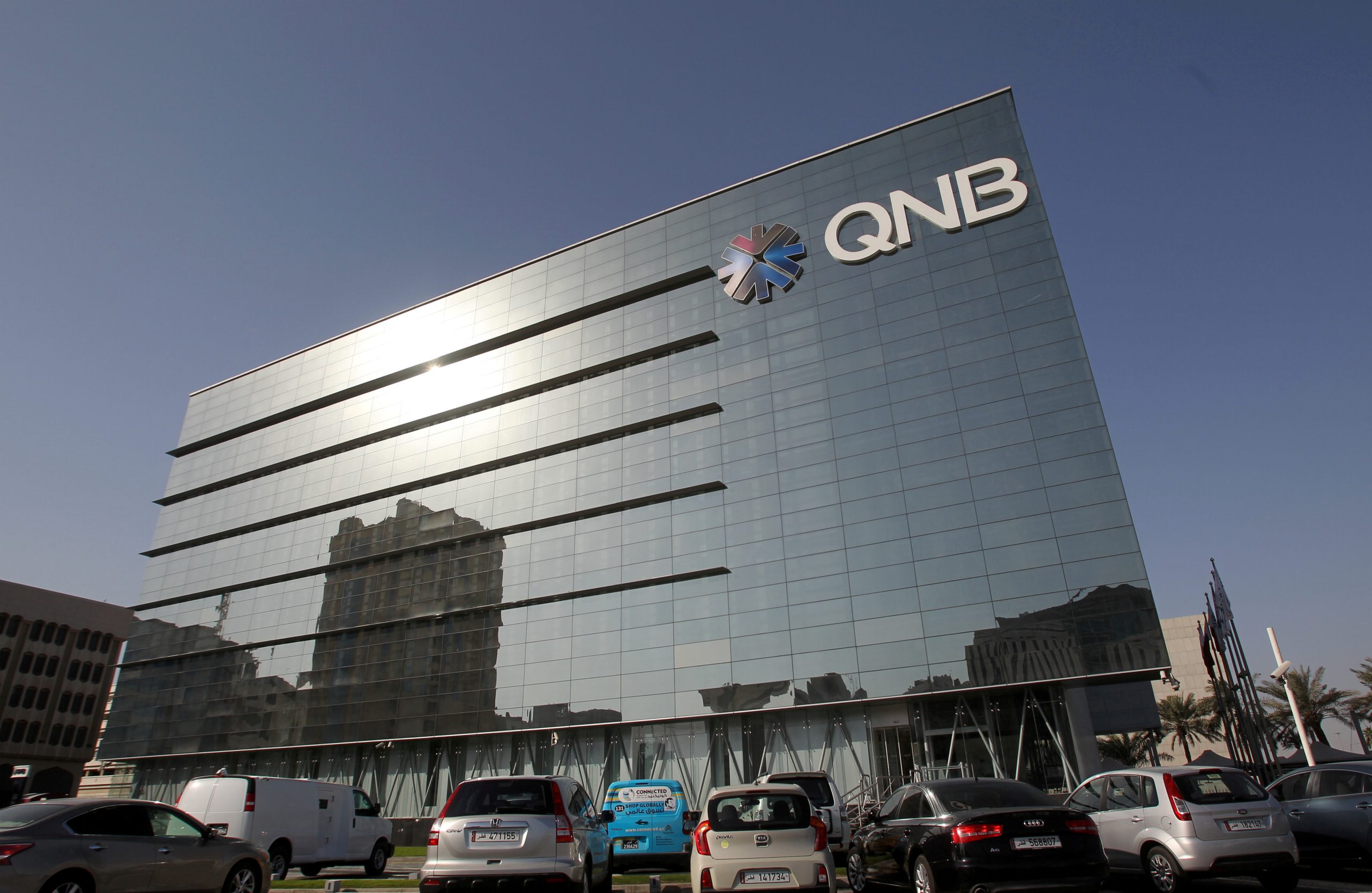QNB Underlines Economic Recovery of Asian Countries from COVID-19 Effects
تقرير بنك قطر الوطني يؤكد تعافي اقتصاد الدول الاسيوية من آثار جائحة كورونا
QNA
Doha: Qatar National Bank (QNB) said that the global economy is recovering strongly from the COVID-19 pandemic. Such rapid economic normalization would not have been possible without the development of effective treatments and vaccines. The main driver of the recovery has been unprecedented fiscal and monetary stimulus, particularly in the US and China. This boosted consumer demand for manufactured goods, which has benefited “Factory Asia”.
In its weekly commentary, QNB stated, “Factory Asia is a term that refers to the fact that the majority of consumer goods produced in the world are made in Asia. This is more than just a China story, because some of the most high-tech components are made in countries like Japan, Korea and Taiwan. These components are then assembled in countries with lower labor costs. Historically, China has done the Lions share of the assembly, but more recently supply chains have been spreading to other countries less developed countries.”
“There is clear divergence between the speed and strength of the economic recovery in different countries within “Factory Asia”. We measure this by comparing the level of GDP in 2022 forecast by the IMF in its latest World Economic Outlook, with the level forecast before the pandemic in October 2019. What we see is that advanced countries are recovering more strongly from the pandemic than developing countries. This article seeks to explain this divergence by focusing on three key factors; the importance of manufacturing, levels of vaccination and the amount of policy space.”
The bank pointed out, “First, we can see that advanced countries tend to have a higher share of manufacturing than developing countries, averaging 25 percent of GDP relative to only 15 percent. Large manufacturing sectors mean that countries within “Factory Asia” are all benefiting from robust global demand for consumer goods. However, the larger share of manufacturing in advanced countries means that they benefit the most. This helps to explain why their economies are expected to be only slightly below their pre-crisis trend in 2022, and even above in the case of Taiwan.
“Second, the Delta variant hit “Factory Asia” particularly hard during Q2 and Q3 of this year. The main reason was that the Delta variant is so much more infectious than the original virus. Fortunately, after a slow start, Asian countries have now made significant progress with vaccination campaigns. However, despite this progress there remains a clear divergence between countries, with advanced countries administering many more vaccine doses per hundred people than developing countries. The main reason for this is that advanced countries had earlier access to vaccines and more established infrastructure for transporting, storing and administering them.
“The slow start to vaccination campaigns and still- low level of vaccination in developing countries helps explain why they were hit harder by the Delta variant and therefore less able to benefit from the exceptionally strong demand for consumer goods. We expect some catch-up in vaccinations next year, but this is too late for developing countries to benefit from the full force of the consumer boom, which we expect to moderate slightly next year.
“Third, another important factor to consider is the amount of fiscal and monetary policy space. Fiscal and monetary stimulus allow countries to support consumption and investment through periods of economic disruption like the pandemic. Advanced countries typically have greater policy space than developing countries, which is another reason why their recovery from the pandemic is stronger. High global inflation and tightening global financial conditions mean that the benefit of having greater policy space is more likely to increase than decrease next year. This will make it more difficult for developing countries to catch up with the advanced countries.
QNB said, “In conclusion, the relative size of manufacturing sectors, effectiveness of vaccination campaigns and amount of policy space all help to explain the divergence in the speed and strength of recovery from the pandemic within “Factory Asia”. The core factors are relatively persistent, so we expect advanced countries to remain around their pre- pandemic growth trend, whereas we do not expect developing countries to catch up to their pre- pandemic trend within the next two years.”
قنا
الدوحة: كشف احدث تقرير اقتصادي لبنك قطر الوطني /QNB/ إن الاقتصاد العالمي يتعافى بقوة من جائحة كوفيد-19 ،ولم يكن هذا التعافي الاقتصادي السريع ممكناً بدون تطوير علاجات ولقاحات فعالة ضد الفيروس ،وكان المحرك الرئيسي للتعافي هو التحفيز المالي والنقدي غير المسبوق، لا سيما في الولايات المتحدة والصين، الذي أدى إلى زيادة طلب المستهلكين على السلع المصنعة، الأمر الذي أفاد “مراكز التصنيع الآسيوية”.
وأشار التقرير إن مصطلح “مراكز التصنيع الآسيوية” يشير إلى حقيقة أن غالبية السلع الاستهلاكية المنتجة في العالم مصنوعة في قارة آسيا. ولا يقتصر الأمر على الصين، لأن بعض المكونات المتطورة والأجزاء التكنولوجية مصنوعة في بلدان مثل اليابان وكوريا وتايوان. ويتم تجميع هذه المكونات في البلدان التي تتميز بانخفاض تكلفة اليد العاملة. تاريخياً، كان للصين حصة الأسد في التجميع، ولكن في الآونة الأخيرة انتشرت سلاسل التوريد إلى بلدان أخرى أقل تقدماً.
وأوضح تقرير البنك أن هناك تباين واضح بين سرعة وقوة التعافي الاقتصادي في بلدان مختلفة ضمن “مراكز التصنيع الآسيوية”. ويمكننا قياس ذلك من خلال مقارنة توقعات نمو الناتج المحلي الإجمالي في عام 2022 الصادرة عن صندوق النقد الدولي في تقريره الأخير بشأن آفاق الاقتصاد العالمي مع النمو المتوقع قبل الجائحة في أكتوبر 2019.
وقال التقرير الأسبوعي الصادر عن بنك QNB أن نلاحظ البلدان المتقدمة تتعافى من الجائحة بقوة أكبر من البلدان النامية. ويمكن شرح هذا التباين من خلال التركيز على ثلاثة عوامل رئيسية تتمثل في أهمية التصنيع، ومستويات التطعيم، وحيز السياسات النقدية والمالية.
أولاً، يمكننا أن نلاحظ أن قطاع التصنيع يشكل حصة أكبر في اقتصادات البلدان المتقدمة مقارنة بالبلدان النامية، إذ تبلغ حصته في المتوسط 25% من الناتج المحلي الإجمالي في البلدان النامية مقارنة بـ 15% فقط في البلدان النامية. ويعني كِبر قطاعات التصنيع أن بلدان “مراكز التصنيع الآسيوية” تستفيد جميعها من الطلب العالمي القوي على السلع الاستهلاكية. ومع ذلك، فإن الحصة الأكبر لقطاع التصنيع في البلدان المتقدمة تعني أنها تستفيد أكثر من غيرها. وهذا يفسر التوقعات بأن أداء اقتصاداتها سيكون أقل بقليل فقط مما كان عليه قبل الأزمة في عام 2022، أو حتى أعلى كما هو الحال مع تايوان.
ثانياً، ضرب متحور دلتا مراكز التصنيع الآسيوية بشدة خلال الربعين الثاني والثالث من هذا العام. ويرجع السبب الرئيسي في ذلك إلى كون متحور دلتا ينتقل أسرع بكثير من الفيروس الأصلي. لحسن الحظ، بعد بداية بطيئة، حققت الدول الآسيوية الآن تقدماً كبيراً في حملات التطعيم. ومع ذلك، على الرغم من هذا التقدم، لا يزال هناك تباين واضح بين البلدان، حيث تعطي الدول المتقدمة جرعات لقاح أكثر لكل مائة شخص مقارنة بالبلدان النامية. والسبب الرئيسي لذلك هو أن البلدان المتقدمة كان لديها وصول مبكر للقاحات وبنية تحتية أكثر تطوراً لنقلها وتخزينها وطرحها للتطعيم.
وأكد تقرير البنك ان البداية البطيئة لحملات التطعيم ومستوى التطعيم الذي لا يزال منخفضاً في البلدان النامية يساعدان في تفسير سبب تعرض هذه البلدان بشدة لموجة المتحور دلتا وبالتالي تراجع قدرتها على الاستفادة من الطلب الاستثنائي القوي على السلع الاستهلاكية. نتوقع بعض التقدم في منح اللقاحات في العام المقبل، لكن ذلك سيكون متأخراً جداً بالنسبة للبلدان النامية للاستفادة بالكامل من الطفرة الاستهلاكية، والتي نتوقع أن تنخفض قليلاً في العام المقبل.
ثالثاً، هناك عامل مهم آخر يجب مراعاته وهو حيز السياسة المالية والنقدية. ويسمح التحفيز المالي والنقدي للبلدان بدعم الاستهلاك والاستثمار خلال فترات الاضطراب الاقتصادي مثل الجائحة. وعادةً ما يكون لدى البلدان المتقدمة مساحة أكبر للسياسات الاقتصادية من البلدان النامية، وهذا سبب آخر يجعل تعافيها من الجائحة أقوى. إن ارتفاع معدلات التضخم عالمياً وتشديد الأوضاع المالية العالمية يعني أن الفائدة من وجود حيز أكبر للسياسات الاقتصادية من المرجح أن تزداد بدلاً من أن تنخفض في العام المقبل. وهذا سيجعل من الصعب على البلدان النامية اللحاق بركب البلدان المتقدمة.
وأشار البنك في اخر التقرير إن الحجم النسبي لقطاعات التصنيع وفعالية حملات التطعيم والحيز المتاح للسياسات الاقتصادية جميعها عوامل تساعد على تفسير الاختلاف في سرعة وقوة التعافي من الجائحة داخل مراكز التصنيع الآسيوية. ونظراً لأن العوامل الأساسية ثابتة نسبياً، فإننا نتوقع أن تظل البلدان المتقدمة قريبة من مستويات النمو التي كانت تحققها في فترة ما قبل الجائحة، بينما لا نتوقع أن تحقق البلدان النامية ذلك في العامين المقبلين.




